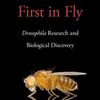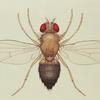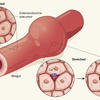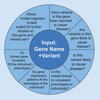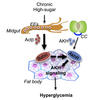Hormone alerts brain to fat-storage status, but its packaging system goes awry in obesity.
If you’re one of the millions of Americans who’s ever tried to lose weight, you’ve probably heard the old dieting chestnut, “calories in, calories out.”
Calorie restriction does, on the whole, lead to weight loss. But nutrition and energy researchers might rephrase that axiom to more accurately read: “Calories in (a bunch of stuff happens in the body and the brain that influences) calories out.”
A new study published Monday in the journal Developmental Cell uncovers several steps of that complex internal communication system — in fruit flies.
Yes, fruit flies have fat too. Just not very much.
There’s reason to believe these newly discovered molecular pieces of the obesity puzzle could be important in humans, said Dr. Akhila Rajan, a basic scientist at Fred Hutchinson Cancer Research Center and lead author of the study.
In a previous study conducted at Harvard Medical School, where she completed her postdoctoral fellowship, Rajan and colleagues found that a hormone — leptin — which travels from fat to brain exists in both humans and fruit flies. In fact, the human version of leptin can sub in for the insect version of the hormone in genetically engineered flies.
In obese people, something goes awry with leptin, which acts as a readout of the body’s fat-storage levels. The hormone’s packaging system changes, but it’s not clear exactly where that dysfunction arises. If those details were worked out, it’s possible that fixing leptin’s packaging could be a new therapeutic avenue to battle obesity, Rajan said.
The other pieces of the signaling chain that the researchers identified in their latest study are also largely the same in fruit flies and people. These new pieces include a protein that shuttles the fly leptin across the border of fat cells. Rajan, Harvard developmental biologist Dr. Norbert Perrimon and their colleagues also found that high levels of calcium, triggered during starvation, block leptin’s migration.... Read more about "Fruit fly study IDs missing links in fat-signaling system"

